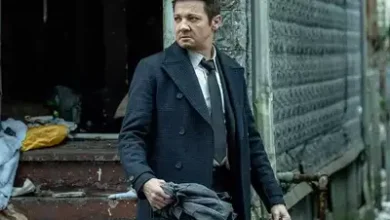Return of ‘Shaan’ by Ramesh Sippy to the Big Screen
Few movies have had as long of an impact on Indian cinema history as Ramesh Sippy’s 1980 smash “Shaan.” The film’s spectacular combination of action, drama, and memorable songs helped it to become a critical and financial triumph upon its first release. In order to celebrate the silver anniversary of this cinematic masterpiece, Ramesh Sippy took a chance in April 2005 and re-released “Shaan” with a digitally enhanced print. This allowed a new generation of moviegoers to experience the enchantment of this classic on the big screen.
Before exploring the interesting re-release of “Shaan,” it is important to be familiar with the development of Indian cinema and the movie’s genesis. Ramesh Sippy, the director behind the enduring “Sholay,” helmed “Shaan,” which was a unique production in and of itself. The cast starred Amitabh Bachchan, Shashi Kapoor, Sunil Dutt, Parveen Babi, and Bindiya Goswami, among others, and it was released in 1980. The movie’s unique mix of espionage, suspense, and action was a breath of new air in a genre dominated by love tales and family tragedies.
The premise of “Shaan” revolved on two competing brothers, who were portrayed by Amitabh Bachchan and Shashi Kapoor. They were compelled to cooperate with certain outlaws in order to overthrow a crafty criminal ringleader. The movie’s script by Salim-Javed was full with amusing dialogue, fascinating characters, and thrilling set pieces. Without a doubt, “Shaan” changed the way action movies were made in India.
The Indian cinema industry was getting ready to celebrate “Shaan’s” 25th birthday in April 2005. Ramesh Sippy, the talented director who had produced this masterpiece, got the opportunity to expose “Shaan” to a new generation of moviegoers thanks to this momentous event. But it wasn’t simply a nostalgic journey down memory lane. It was Sippy’s more ambitious plan to re-release “Shaan” with a digitally enhanced print.
“Shaan” was selected for digitalization for many reasons than only to commemorate a significant event in Indian film. Making ensuring that the movie will be accessible to and interesting to future generations was a risky choice. The filmmaker was fully aware of how cinema technology was developing and sought to adapt to these developments while preserving the spirit of his work.
For its re-release on digital platforms, “Shaan” needed to be restored with great care and time. The first phase was the time-consuming process of digitizing the original film negatives. These were painstakingly scanned to create high-resolution digital copies, making sure that every frame was kept in its ideal state. The restoration crew had to meticulously erase any physical faults, scratches, and imperfections that had collected on the film over time.
One of the toughest hurdles was restoring the film’s color and clarity. Due of its spectacular cinematography and eye-catching images, Sippy was keen that “Shaan” be preserved in its original grandeur. The film’s rich color palette was restored, and specialists enhanced the overall visual appeal by using advanced digital color restoration methods.
Additionally, the audio was totally redone. The movie’s famous music by R.D. Burman needs to be remixed in order to sound as crystal clear and alluring as it did in 1980. In order to eliminate audio artifacts and enhance the film’s immersion, sound designers worked very hard.
While “Shaan’s” digital restoration aimed to enhance the film’s technical qualities, it was crucial to preserve the movie’s heart and spirit. Ramesh Sippy actively participated in the process and made sure that every creative decision was consistent with his original intent. The filmmaker wanted to achieve a careful balance between modernism and nostalgia to make sure that the movie’s eternal appeal would be recognized by the next generation of spectators.
The movie’s release format was altered so that it could be shown in modern theaters. It was now available in digital cinema packages (DCPs), ensuring a consistent and top-notch viewing experience across theaters. The audience could now appreciate “Shaan” on the large screen with the same clarity and beauty of recent releases.
Ramesh Sippy’s decision to re-release “Shaan” with a digital print in April 2005 was praised by critics and spectators alike. The recreated cinematic experience of the film served as evidence of both the narrative genre’s ongoing strength and of filmmakers like Sippy’s commitment to preserve their works for future viewers.
The re-release of “Shaan” has spurred renewed interest in traditional Indian film. It served as a reminder that Bollywood’s Golden Age had created timeless gems that needed to be loved and honored. The charm of “Shaan” might now be experienced by younger audiences, who may not have had the opportunity to do so when it initially came out.
Releasing “Shaan” in April 2005 with a digitally restored print was a genius decision by Ramesh Sippy that allowed a new generation to appreciate the film’s brilliance. The painstaking digital restoration procedure ensured that the film kept its beauty from the start while responding to modern cinema technology. “Shaan” is still a fantastic example of how conventional Indian film can enthrall and move audiences despite the passage of time and developments in technology.







